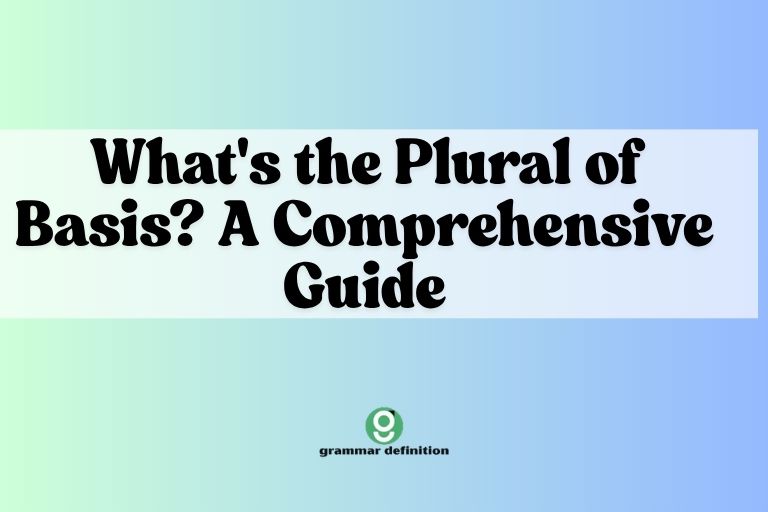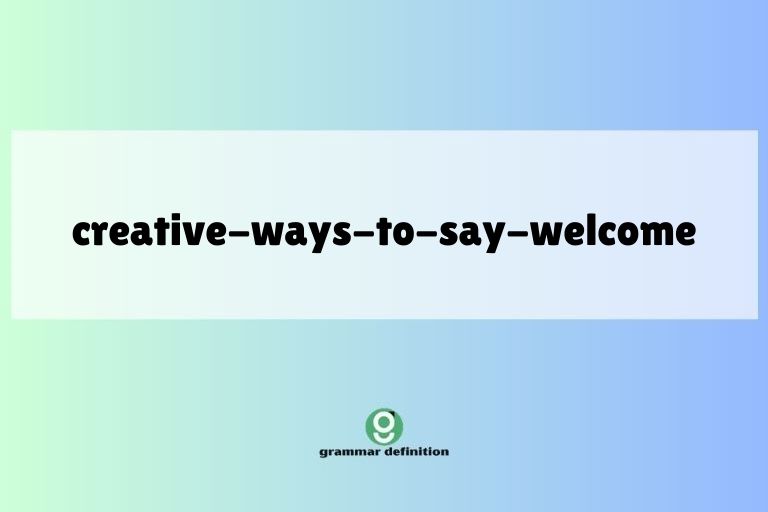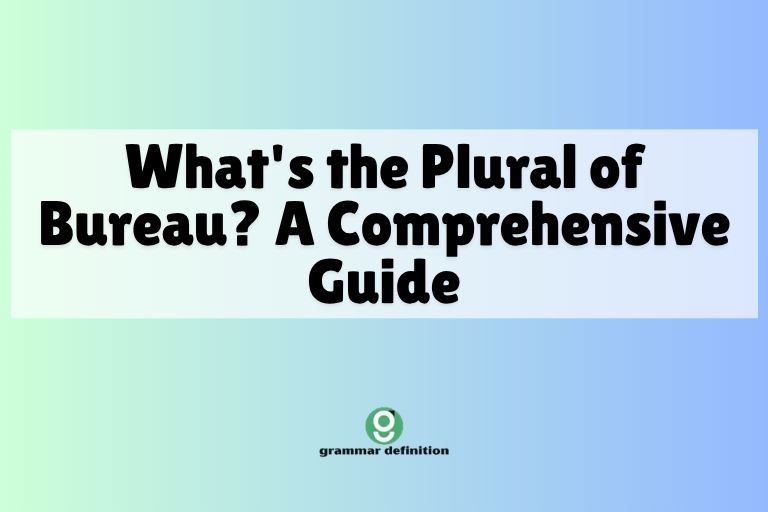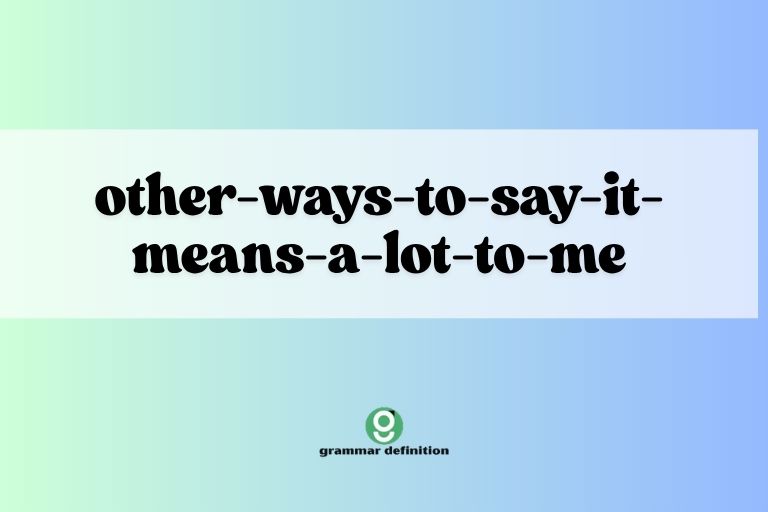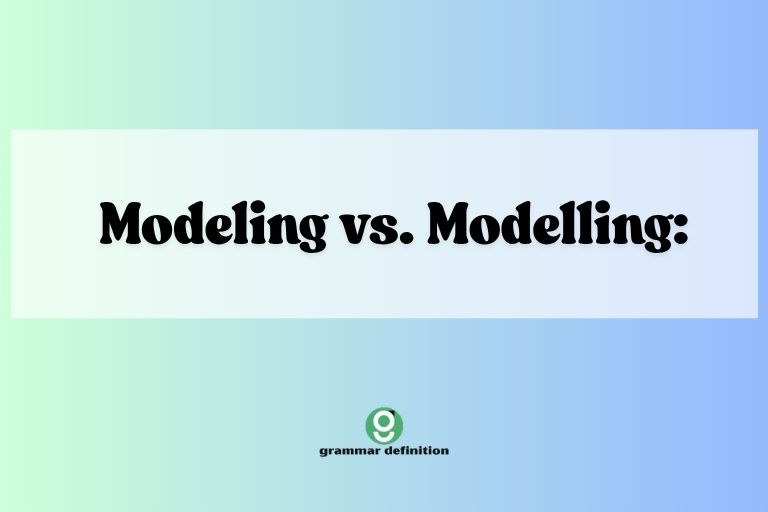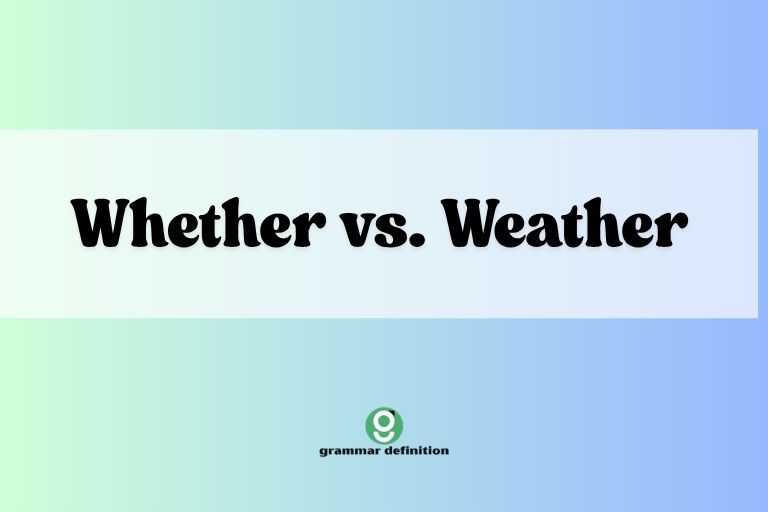Parentheses: Definition, Usage, and Comprehensive Examples
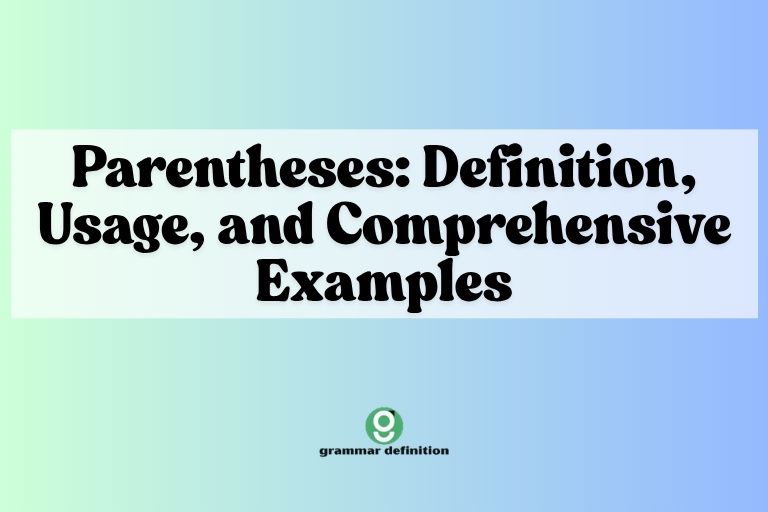
Parentheses are essential punctuation marks in the English language, serving to add extra information, clarifications, or asides to sentences. Mastering their usage can significantly enhance the clarity and complexity of your writing.
This article provides a detailed exploration of parentheses, covering their definition, structural rules, various types, and common pitfalls. Whether you’re a student, writer, or simply looking to improve your grammar, this guide will equip you with the knowledge and skills to use parentheses effectively.
By understanding the nuances of parentheses, you can enrich your writing style and convey information more precisely. We’ll delve into practical examples, usage rules, and practice exercises to solidify your understanding.
Let’s embark on this journey to master the art of using parentheses!
Table of Contents
- 1. Definition of Parentheses
- 2. Structural Breakdown
- 3. Types and Categories of Parentheses
- 4. Examples of Parentheses Usage
- 5. Usage Rules for Parentheses
- 6. Common Mistakes with Parentheses
- 7. Practice Exercises
- 8. Advanced Topics on Parentheses
- 9. Frequently Asked Questions (FAQ)
- 10. Conclusion
1. Definition of Parentheses
Parentheses, also known as round brackets or curved brackets, are punctuation marks used in pairs to set off words, phrases, or sentences within a larger sentence. They serve to provide additional information, explanations, or comments that are not essential to the main sentence structure.
The material enclosed within parentheses is supplementary and can usually be removed without grammatically altering the sentence.
In formal writing, parentheses are used to add clarifying details, citations, or to provide context. In informal writing, they can add a conversational tone or include personal thoughts.
They are distinct from other bracketing punctuation marks, such as square brackets (used for editorial insertions) and curly brackets (used in mathematics and computer programming).
Essentially, parentheses act as containers for information that enriches but does not define the core meaning of a sentence. They offer flexibility in expressing ideas while maintaining grammatical correctness.
2. Structural Breakdown
The structural use of parentheses involves understanding how they fit within a sentence and how the information they contain interacts with the surrounding text. Proper placement and punctuation are key to using parentheses effectively.
2.1 Placement within a Sentence
Parentheses can appear at various points within a sentence: at the beginning, middle, or end. The placement often depends on the type of information being added and its relevance to the surrounding text.
- Beginning: (Although it rained all day,) the event was still a success.
- Middle: The book, (which I borrowed from the library,) was very informative.
- End: The project was completed on time (despite several setbacks).
2.2 Punctuation Inside and Outside Parentheses
Punctuation rules dictate how commas, periods, question marks, and exclamation points should be handled in relation to parentheses. Here are the key guidelines:
- Commas: If the parenthetical content is part of a sentence, commas are typically placed outside the closing parenthesis. However, if the parenthetical content is a complete sentence, the comma is omitted.
- Periods: If the entire sentence is inside the parentheses, the period goes inside. If the parenthetical material is part of a larger sentence, the period goes outside.
- Question Marks and Exclamation Points: These go inside the parentheses if they apply only to the parenthetical content. If they apply to the entire sentence, they go outside.
2.3 Grammatical Agreement
Ensure that the parenthetical content does not disrupt the grammatical flow of the main sentence. The sentence should remain coherent and grammatically correct even if the content within parentheses is removed.
Example: The team members (John, Mary, and Susan) are highly skilled. Removing the parentheses, the sentence still reads: “The team members are highly skilled,” which is grammatically sound.
3. Types and Categories of Parentheses
Parentheses can be categorized based on their function and the type of information they contain. Understanding these categories can help you use parentheses more effectively in your writing.
3.1 Explanatory Parentheses
Explanatory parentheses provide additional details or explanations to clarify a term or concept mentioned in the main sentence. They often define abbreviations, provide dates, or offer background information.
Example: The World Health Organization (WHO) is responsible for international public health.
3.2 Parenthetical Asides
Parenthetical asides offer personal comments, opinions, or related thoughts that are not essential to the main topic but add a conversational or informal tone to the writing. These can be removed without affecting the sentence’s core meaning.
Example: I decided to try the new restaurant (it had great reviews online), and it was fantastic.
3.3 Citations and References
In academic and research writing, parentheses are commonly used for citations and references. They provide sources for information presented in the text, allowing readers to verify the data.
Example: According to Smith (2018), the results were significant.
3.4 Numerical or Alphabetical Enumerations
Parentheses can enclose numbers or letters in lists or enumerations within a sentence. This is particularly useful when presenting a series of points compactly.
Example: The steps to complete the task are: (1) gather materials, (2) assemble components, and (3) test functionality.
3.5 Abbreviations and Acronyms
Parentheses are used to introduce abbreviations or acronyms after the full term has been mentioned for the first time. This helps readers understand the meaning of the abbreviation.
Example: The National Aeronautics and Space Administration (NASA) is a leading space agency.
4. Examples of Parentheses Usage
To illustrate the diverse applications of parentheses, let’s examine a series of examples categorized by their function. These examples will provide a clear understanding of how parentheses can enhance your writing.
4.1 Explanatory Examples
This section showcases examples where parentheses are used to provide additional explanations or clarifications.
| Sentence | Explanation |
|---|---|
| The capital of Australia (Canberra) is often mistaken for Sydney. | Clarifies which city is the capital. |
| The Renaissance (c. 1300-1600) was a period of significant cultural change. | Provides the approximate dates of the Renaissance. |
| The patient was diagnosed with influenza (the flu). | Explains the common name for influenza. |
| Photosynthesis (the process by which plants convert light into energy) is essential for life. | Defines the term photosynthesis. |
| The treaty was signed in 1991 (the year the Soviet Union dissolved). | Adds context by mentioning a significant historical event. |
| His birthday is on June 15 (a Tuesday this year). | Provides additional information about the date. |
| The conference will be held in Tokyo (Japan). | Specifies the country where Tokyo is located. |
| The company reported a significant increase in revenue (over 20%). | Quantifies the increase in revenue. |
| The study focused on cognitive dissonance (the mental stress caused by conflicting beliefs). | Defines the psychological term. |
| She decided to pursue a degree in psychology (the study of the human mind). | Explains what psychology entails. |
| The new policy will take effect on January 1 (New Year’s Day). | Adds a common name for the date. |
| The author’s first novel (published in 2005) became an instant bestseller. | Provides the publication year of the novel. |
| The experiment was conducted at room temperature (25 degrees Celsius). | Specifies the exact temperature. |
| The project deadline is Friday (October 27). | Adds the specific date of the deadline. |
| The museum houses a collection of Impressionist art (Monet, Renoir, Degas). | Lists examples of Impressionist artists. |
| The package includes all necessary hardware (screws, bolts, and washers). | Provides a list of included hardware components. |
| The recipe calls for baking soda (sodium bicarbonate). | Gives the chemical name of baking soda. |
| The presentation will cover various marketing strategies (SEO, SEM, and social media). | Lists specific marketing strategies. |
| The software update includes several bug fixes (version 2.5). | Specifies the version number of the update. |
| The lecture will be given by Dr. Smith (a renowned expert in the field). | Adds information about Dr. Smith’s expertise. |
| The train departs at 8:00 AM (sharp). | Emphasizes the punctuality of the departure. |
| The film is based on a true story (the events of 1942). | Provides the historical context of the film. |
4.2 Parenthetical Asides Examples
This section provides examples of parenthetical asides that add personal comments or related thoughts.
| Sentence | Explanation |
|---|---|
| I went to the store (it was surprisingly empty), and bought everything I needed. | Adds a personal observation about the store’s emptiness. |
| The movie was fantastic (I highly recommend it), and I plan to see it again. | Includes a personal recommendation. |
| She finished the marathon (an incredible achievement), and celebrated with her friends. | Adds a comment praising the achievement. |
| He decided to take a vacation (he really needed one), and booked a trip to Hawaii. | Explains the reason for the vacation. |
| The cake was delicious (my grandmother’s recipe), and everyone enjoyed it. | Mentions the origin of the recipe. |
| The concert was amazing (best night ever!), and I can’t wait for the next one. | Expresses enthusiasm about the concert. |
| I tried the new coffee shop (it’s just around the corner), and loved the atmosphere. | Provides a location reference. |
| The book was quite challenging (but ultimately rewarding), and I learned a lot. | Adds a personal reflection on the book’s difficulty. |
| She accepted the job offer (a dream come true), and is excited to start. | Expresses the joy of achieving a dream. |
| He completed the project (after many sleepless nights), and felt a great sense of accomplishment. | Highlights the effort put into the project. |
| The weather was perfect (sunny and warm), and we spent the day at the beach. | Describes the pleasant weather conditions. |
| I finally finished the puzzle (it took me weeks!), and it looks great. | Emphasizes the time spent completing the puzzle. |
| The test was easier than I expected (thankfully!), and I think I did well. | Expresses relief about the test’s difficulty. |
| She wore a beautiful dress (it was custom-made), and looked stunning. | Mentions the dress’s unique design. |
| He gave a great speech (everyone was impressed), and received a standing ovation. | Highlights the positive reception of the speech. |
| The dinner was a success (thanks to everyone’s help), and we had a wonderful time. | Acknowledges the contributions of others. |
| I learned a new skill (it was surprisingly easy), and I’m excited to use it. | Expresses surprise at the ease of learning the skill. |
| The garden is blooming (after all the rain), and it’s full of color. | Notes the impact of the rain on the garden. |
| She found her lost keys (after searching everywhere), and was relieved. | Highlights the relief of finding the keys. |
| He fixed the broken computer (it was just a loose wire), and saved the day. | Explains the simple cause of the computer’s malfunction. |
| The meeting was productive (we made some great decisions), and everyone was engaged. | Describes the positive outcome of the meeting. |
| I baked a pie (my first time ever!), and it turned out delicious. | Highlights the novelty of baking a pie. |
4.3 Citations and References Examples
The following table illustrates how parentheses are used to include citations and references in academic writing.
| Sentence | Explanation |
|---|---|
| The study found a correlation between exercise and mental health (Smith, 2015). | Cites a study by Smith in 2015. |
| According to Jones (2018), the results were statistically significant. | Attributes the statement to Jones in 2018. |
| The theory was first proposed by Einstein (1905). | Indicates when Einstein proposed the theory. |
| (See Johnson, 2020, for a detailed analysis.) | Directs the reader to a specific source for more information. |
| The data supports the hypothesis (Brown et al., 2019). | Cites a group of authors (Brown et al.) in 2019. |
| (For more information, consult Williams, 2017, pp. 45-50.) | Provides a specific page range in Williams’s 2017 publication. |
| The concept of emotional intelligence was popularized by Goleman (1995). | Attributes the popularization of the concept to Goleman in 1995. |
| The research builds on previous findings (Davis, 2016; Miller, 2018). | Cites multiple sources separated by a semicolon. |
| (As noted in Anderson, 2014, p. 78). | Refers to a specific page in Anderson’s 2014 work. |
| The argument is based on historical evidence (Thompson, 2010). | Indicates that the argument is supported by Thompson’s 2010 work. |
| (Refer to White, 2012, Appendix A for additional details.) | Directs the reader to a specific section in White’s 2012 publication. |
| The study confirms earlier research (Garcia & Lee, 2013). | Cites Garcia and Lee’s 2013 research. |
| (See also Roberts, 2011, Chapter 3.) | Refers the reader to a specific chapter in Roberts’s 2011 publication. |
| The results are consistent with those reported by Clark (2009). | Compares the results with Clark’s 2009 findings. |
| (Adapted from Smith, 2017, Figure 2.) | Indicates that the information is adapted from a specific figure in Smith’s 2017 work. |
| The methodology was described in detail (Martin, 2015). | Refers to Martin’s 2015 work for a detailed description of the methodology. |
| (Compare with Wilson, 2014, Table 1.) | Asks the reader to compare the information with a specific table in Wilson’s 2014 publication. |
| The findings are preliminary (as of June 2024). | Indicates the data is preliminary as of a specific date. |
| (Based on data from the U.S. Census Bureau, 2020.) | Specifies the source of the data used. |
| The research was funded by the National Science Foundation (NSF). | Indicates the funding source for the research. |
| (For a comprehensive review, see Green, 2016.) | Recommends Green’s 2016 publication for a comprehensive review. |
| The argument is further supported by recent studies (Taylor, 2019). | Indicates that recent studies support the argument. |
5. Usage Rules for Parentheses
Using parentheses correctly involves adhering to specific grammar and style rules. These rules ensure that the parenthetical content integrates smoothly into the sentence and maintains clarity.
5.1 Placement of Punctuation
As mentioned earlier, the placement of punctuation marks relative to parentheses is crucial. If the parenthetical content is a complete sentence, the period goes inside the parentheses.
If it’s part of the main sentence, the period goes outside.
Correct: I went to the park (it was a beautiful day).
Correct: I went to the park (because it was a beautiful day).
5.2 Use of Commas
Commas are generally placed outside the closing parenthesis unless the parenthetical content requires a comma internally.
Correct: The book, (which I found interesting), was a great read.
Incorrect: The book (which I found interesting,) was a great read.
5.3 Avoiding Overuse
While parentheses can be useful, overuse can clutter your writing and make it difficult to read. Use them sparingly and only when necessary to add relevant information.
Example: Instead of: “The project (which was complex) required (a lot of) time and effort.”
Write: “The complex project required significant time and effort.”
5.4 Nested Parentheses
Nested parentheses (parentheses within parentheses) should generally be avoided as they can be confusing. If necessary, consider using a different bracketing style, such as square brackets, or rephrasing the sentence.
Poor: The report (which included data (from 2022)) was comprehensive.
Better: The report, which included data [from 2022], was comprehensive.
5.5 Capitalization
If the parenthetical content is a complete sentence and stands alone, it should begin with a capital letter. If it’s part of the main sentence, it should not be capitalized unless it’s a proper noun.
Correct: I went to the store. (It was very crowded.)
Correct: I went to the store (because I needed milk).
6. Common Mistakes with Parentheses
Several common mistakes can occur when using parentheses. Recognizing and avoiding these errors will improve the clarity and correctness of your writing.
6.1 Incorrect Punctuation
One of the most frequent errors is placing punctuation marks inside or outside the parentheses incorrectly. Remember, periods go inside if the parenthetical content is a complete sentence; otherwise, they go outside.
Incorrect: The event was a success (despite the rain.).
Correct: The event was a success (despite the rain).
6.2 Overuse of Parentheses
Overusing parentheses can make your writing seem cluttered and disjointed. Use them judiciously and consider alternative ways to incorporate the information.
Poor: The meeting (which was scheduled for Monday) was postponed (due to unforeseen circumstances).
Better: The meeting scheduled for Monday was postponed due to unforeseen circumstances.
6.3 Lack of Grammatical Agreement
Ensure that the parenthetical content does not disrupt the grammatical flow of the main sentence. The sentence should remain grammatically correct even if the parenthetical content is removed.
Incorrect: The team members (John, Mary, and are Susan) are highly skilled.
Correct: The team members (John, Mary, and Susan) are highly skilled.
6.4 Misuse of Nested Parentheses
Avoid nesting parentheses within parentheses as it can confuse readers. If necessary, use square brackets or rephrase the sentence to improve clarity.
Poor: The study (which examined data (from 2010 to 2020)) was comprehensive.
Better: The study, which examined data [from 2010 to 2020], was comprehensive.
6.5 Unnecessary Parentheses
Sometimes, parentheses are used when the information could be integrated more smoothly into the sentence without them.
Poor: The concert (which was held outdoors) was a great success.
Better: The outdoor concert was a great success.
7. Practice Exercises
To reinforce your understanding of parentheses, complete the following exercises. Fill in the blanks or rewrite the sentences to correctly incorporate parenthetical information.
Exercise 1: Correct the Punctuation
Correct the punctuation in the following sentences where necessary.
| Question | Answer |
|---|---|
| 1. The book (which I borrowed from the library.) was very informative. | The book (which I borrowed from the library) was very informative. |
| 2. I went to the store (it was surprisingly empty). | I went to the store (it was surprisingly empty). |
| 3. The concert was amazing (best night ever!) . | The concert was amazing (best night ever!). |
| 4. The weather was perfect (sunny and warm,) and we spent the day at the beach. | The weather was perfect (sunny and warm), and we spent the day at the beach. |
| 5. She found her lost keys (after searching everywhere), and was relieved. | She found her lost keys (after searching everywhere) and was relieved. |
| 6. According to Jones (2018), the results were statistically significant. | According to Jones (2018), the results were statistically significant. |
| 7. The results are consistent with those reported by Clark (2009). | The results are consistent with those reported by Clark (2009). |
| 8. (See Johnson, 2020, for a detailed analysis). | (See Johnson, 2020, for a detailed analysis.) |
| 9. The new policy will take effect on January 1 (New Year’s Day). | The new policy will take effect on January 1 (New Year’s Day). |
| 10. The recipe calls for baking soda (sodium bicarbonate). | The recipe calls for baking soda (sodium bicarbonate). |
Exercise 2: Rewrite with Parentheses
Rewrite the following sentences to include the provided information within parentheses.
| Question | Answer |
|---|---|
| 1. The meeting is scheduled for Tuesday. It will be in the conference room. | The meeting (which is scheduled for Tuesday) will be in the conference room. |
| 2. I visited Paris last summer. It was my first time there. | I visited Paris last summer (it was my first time there). |
| 3. The author’s new book is a bestseller. It was released last month. | The author’s new book (released last month) is a bestseller. |
| 4. The project was completed on time. There were some challenges. | The project was completed on time (despite some challenges). |
| 5. She is a talented musician. She plays the piano and violin. | She is a talented musician (she plays the piano and violin). |
| 6. He loves to travel. He has visited over 30 countries. | He loves to travel (he has visited over 30 countries). |
| 7. The course is very challenging. It requires a lot of dedication. | The course is very challenging (it requires a lot of dedication). |
| 8. The restaurant is highly recommended. It has excellent reviews. | The restaurant (which has excellent reviews) is highly recommended. |
| 9. The city is known for its architecture. It features many historic buildings. | The city (known for its architecture) features many historic buildings. |
| 10. The event was a great success. It raised a lot of money for charity. | The event was a great success (it raised a lot of money for charity). |
Exercise 3: Fill in the Blanks
Fill in the blanks with appropriate parenthetical information to complete the sentences.
| Question | Answer |
|---|---|
| 1. The capital of France, __________, is a popular tourist destination. | The capital of France, (Paris), is a popular tourist destination. |
| 2. The study __________ found significant results. | The study (conducted last year) found significant results. |
| 3. He decided to take a break __________. | He decided to take a break (he was feeling overwhelmed). |
| 4. The conference will be held in Berlin __________. | The conference will be held in Berlin (Germany). |
| 5. She is pursuing a degree in medicine ___________. | She is pursuing a degree in medicine (she wants to become a doctor). |
| 6. The project __________ was completed ahead of schedule. | The project (which was very challenging) was completed ahead of schedule. |
| 7. I bought a new car ___________. | I bought a new car (it’s a hybrid). |
| 8. The museum __________ is open to the public. | The museum (which houses a vast collection of artifacts) is open to the public. |
| 9. The team __________ won the championship. | The team (comprising talented players) won the championship. |
| 10. He is a renowned scientist __________. | He is a renowned scientist (he has won several awards). |
8. Advanced Topics on Parentheses
For advanced learners, there are more nuanced aspects of parentheses to consider. These topics delve into stylistic choices and complex grammatical constructions.
8.1 Parentheses in Academic Writing
In academic writing, parentheses are often used for citations, supplementary information, and clarifying points. Consistency in citation style (e.g., APA, MLA) is crucial.
Example: The results were significant (p < 0.05).
8.2 Parentheses in Technical Writing
Technical writing uses parentheses for definitions, abbreviations, and providing specific measurements or parameters.
Example: The voltage (V) was measured at 120 volts.
8.3 Parentheses in Creative Writing
In creative writing, parentheses can add character voice, provide inner thoughts, or create a sense of intimacy with the reader.
Example: I walked into the room (nervously), and took a seat.
8.4 Using Parentheses for Emphasis
While parentheses are primarily for supplementary information, they can also be used to subtly emphasize a point.
Example: The deadline is crucial (absolutely crucial) for the success of the project.
9. Frequently Asked Questions (FAQ)
Here are some frequently asked questions about parentheses to further clarify their usage.
- Q: Can I use parentheses within parentheses?
A: While technically possible, it’s generally best to avoid nested parentheses as they can be confusing. Consider using square brackets or rephrasing the sentence. - Q: Do I capitalize the first word inside parentheses?
A: If the parenthetical content is a complete sentence, yes, capitalize the first word. If it’s part of the main sentence, do not capitalize unless it’s a proper noun. - Q: Where does the period go when the entire sentence is in parentheses?
A: The period goes inside the parentheses. Example: (This is a complete sentence.) - Q: Is it okay to start a sentence with parentheses?
A: Yes, it is grammatically correct to start a sentence with parentheses, but it should be used sparingly to avoid disrupting the flow of your writing. - Q: Can I use parentheses to include a question?
A: Yes, you can include a question within parentheses. The question mark should be placed inside the parentheses. Example: I went to the store (did you need anything?). - Q: How do I cite sources using parentheses?
A: In academic writing, use parentheses to include citations, following the specific citation style (e.g., APA, MLA) required. Example: (Smith, 2018, p. 45). - Q: Are parentheses the same as brackets?
A: No, parentheses (round brackets) are different from square brackets. Parentheses are used for supplementary information, while square brackets are typically used for editorial insertions or clarifications. - Q: What is the difference between parentheses and em dashes?
A: Both parentheses and em dashes can set off additional information, but em dashes create a stronger break in the sentence and draw more attention to the inserted material. Parentheses are more subtle.
10. Conclusion
Mastering the use of parentheses is a valuable skill that can significantly enhance the clarity, depth, and style of your writing. By understanding their definition, structural rules, various types, and common pitfalls, you can effectively incorporate additional information and create more nuanced and engaging content.
Remember to use parentheses judiciously, avoid overuse, and pay attention to punctuation and grammatical agreement. Practice incorporating parentheses into your writing to solidify your understanding and develop a confident and effective writing style.
With these guidelines, you’ll be well-equipped to use parentheses with precision and flair.
Continue practicing and refining your skills, and you’ll find that parentheses become a natural and powerful tool in your writing arsenal. Happy writing!

